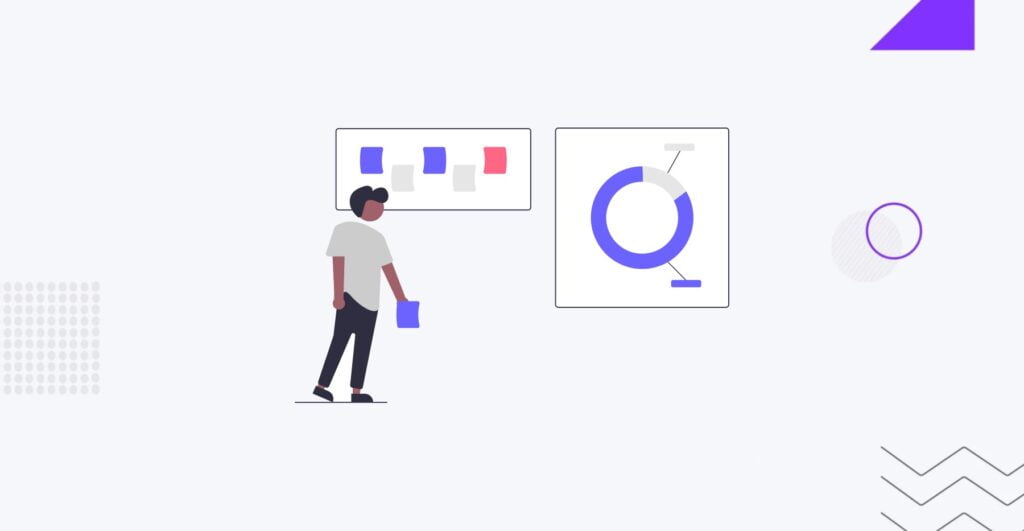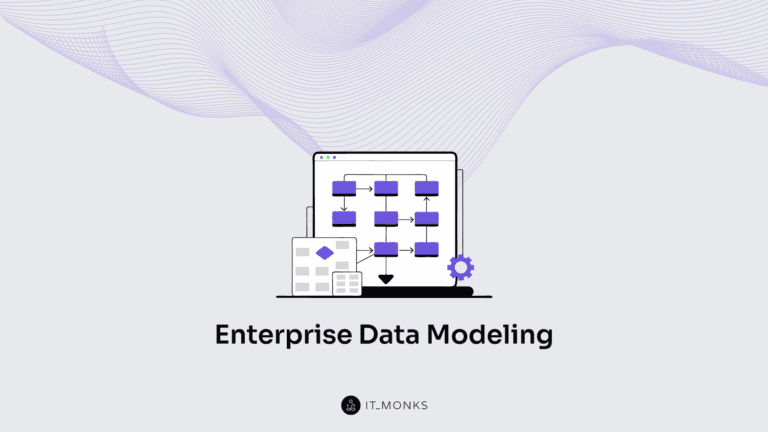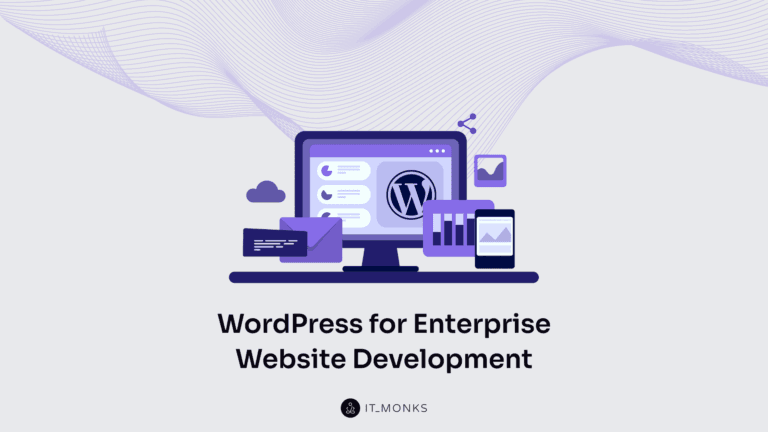10 Proven Strategies to Reduce Average eCommerce Bounce Rate
Table of Contents

It’s important for any eCommerce business to understand why potential customers leave their site without exploring beyond the first page. Whether it’s because they can’t find what they’re looking for or don’t like what they see, it’s crucial to identify the pages with high bounce rates and determine the reasons behind them. Moreover, taking the correct steps in time is crucial to retaining customers and sales. Forewarned is forearmed. This guide presents the 10 most effective strategies to reduce the average eCommerce bounce rate. Let’s dive in!
What is Bounce Rate?
Bounce rate is a crucial metric for measuring the effectiveness of a website in engaging visitors. It provides insights into whether visitors value the website’s content and design. A high bounce rate could indicate underlying issues with the website’s user experience or the relevancy of its content. By taking steps to reduce bounce rates, eCommerce businesses can not only improve their search engine rankings but also increase their revenue. Understanding bounce rates also helps companies identify areas for improvement in their online marketing strategies, ensuring that they effectively reach and engage their target audience. So, it is essential to pay attention to the bounce rate and implement strategies to minimize it.
How is the bounce rate calculated?
Bounce rate is an important metric to track to understand how effectively your website engages visitors. It is calculated by dividing the number of single-page sessions by the total number of sessions on your website and multiplying by 100. A session is a bounce if the visitor leaves without interacting with other site pages. So, it gives you an idea of how many visitors leave your website without further exploring.
Analytics tools like Google Analytics can provide valuable insights into your website’s bounce rate and other relevant metrics. You can gain deeper insights into the factors contributing to your bounce rates by analyzing different traffic segments. This information is crucial for making informed decisions and implementing strategies to reduce bounce rates and improve the overall user experience on your eCommerce site.
What is considered a high bounce rate in eCommerce?
The definition of a high bounce rate varies depending on the industry and type of website, but generally, anything above 60% is considered high in eCommerce. Factors such as landing page design, load time, and customer intent should be considered when evaluating eCommerce bounce rates. It’s essential to understand that a higher-than-average bounce rate compared to competitors may indicate issues with user experience or targeting the wrong audience.
Monitoring and optimizing bounce rates can help eCommerce businesses improve customer engagement and conversion rates. Businesses can attract and retain more visitors by analyzing the factors contributing to high bounce rates and making necessary adjustments, increasing their chances of achieving their desired goals.
Optimizing Website Design and UX
Optimizing website design and user experience is crucial to reducing the average eCommerce bounce rate. Doing so can increase user engagement and encourage them to stay longer on your site. A clean and intuitive website design is crucial in reducing bounce rates. It helps users easily navigate your site and find the information they seek. When the design is clutter-free and visually appealing, visitors are likelier to stay and explore further.
Additionally, enhancing website loading speed is another effective strategy to reduce bounce rates. Slow-loading websites can frustrate users and lead them to abandon the page before it loads completely. By optimizing your site’s performance, you can create a seamless experience for users and keep them engaged.
Another important aspect to consider is making navigation easy and intuitive. When users can easily find what they are looking for, they are likelier to stay on your site and explore further. Clear and organized menus, search functionality, and intuitive links can significantly improve the overall user experience and reduce bounce rates on your eCommerce site.
Crafting user-friendly, conversion-focused websites is the expertise of the IT Monks agency. Professional assistance ensures swift, goal-aligned results.
Improving Website Performance
Optimizing the website for mobile devices is one proven strategy to reduce the average eCommerce bounce rate. This involves ensuring the website is responsive and user-friendly on different screen sizes. By catering to the growing number of users accessing websites through their smartphones and tablets, you can provide them with a seamless browsing experience, which increases the chances of them staying on your site. This strategy requires implementing mobile-friendly design elements such as mobile navigation menus, touch-friendly buttons, and optimized images and videos. When your website is easily navigable and visually appealing on mobile devices, visitors are encouraged to explore further, decreasing the likelihood of bouncing.
Another strategy is to ensure cross-browser compatibility. This means ensuring the website functions correctly and looks consistent across web browsers like Chrome, Firefox, and Safari. Each web browser interprets code differently, and if your website is compatible with only some browsers, it may appear broken or distorted to certain visitors. This can create a frustrating experience and drive them away from your site. By conducting regular tests and ensuring that your website is optimized for all common web browsers, you can provide a seamless experience for all visitors, regardless of the platform they are using. This helps in reducing the bounce rate by keeping visitors engaged and satisfied with your website’s performance.
Fixing broken links and error pages is also crucial in reducing bounce rate. Visitors encountering broken links or error pages create a negative user experience and increase the likelihood of them leaving the site. Monitoring and fixing broken links is essential to ensure visitors can navigate your website smoothly. Similarly, error pages should be customized to provide helpful information and guide users to relevant content. By proactively addressing these issues, you can minimize user frustration and improve their overall browsing experience, ultimately reducing the bounce rate. Implementing caching techniques and optimizing page load speed are additional strategies for improving website performance.
Faster loading times can significantly decrease bounce rates as visitors are more likely to stay engaged with a fast-loading site. Caching involves temporarily storing static files, such as images and CSS, on the user’s device, reducing the number of requests made to the server. This leads to quicker loading times and a smoother browsing experience.
Optimizing page load speed also involves minimizing file sizes, enabling compression, and leveraging browser caching. By prioritizing website speed and implementing these techniques, you can enhance user experience and keep visitors on your site for longer periods, thereby reducing the average eCommerce bounce rate.
Streamlining the Checkout Process
Streamlining the checkout process is one effective strategy to reduce the average eCommerce bounce rate. By simplifying and optimizing the checkout process, you can make it easier and quicker for customers to complete their purchases. A streamlined checkout process reduces the chances of customers abandoning their carts before completing the transaction. One way to implement this is by using a one-page checkout, which can significantly improve the user experience and decrease the bounce rate. With all the necessary information and steps on a single page, customers can quickly proceed to purchase, resulting in a higher conversion rate and lower bounce rate.
Creating Engaging and Relevant Content
Creating engaging and relevant content is crucial to reduce the average eCommerce bounce rate. By providing valuable information tailored to your target audience’s needs and interests, you can capture their attention and encourage them to stay on your site. One effective strategy to accomplish this is incorporating storytelling techniques, using visuals that enhance the content, or adding interactive elements that make the browsing experience more immersive. By offering relevant and engaging content, you keep visitors on your site for longer and build trust with your audience. When users find valuable, informative content on your website, it increases their confidence in your brand and encourages them to explore further. Understanding your target audience’s preferences, pain points, and motivations is crucial in creating engaging and relevant content. By addressing these aspects in your content, you can connect with your audience on a deeper level and keep them engaged.
At IT Monks, we recognize the importance of optimizing your search engine presence for your success. Our expert SEO services enable businesses to expand their online visibility and enhance their rankings in search engine results.
Here at IT Monks, we tailor our results-oriented strategies to meet each client’s unique requirements. We offer cost-effective SEO services that help businesses stand out from their competitors and reach a larger audience.
Implementing Effective Call-to-Actions
To implement effective call-to-actions, it is crucial to place clear and prominent buttons that catch the user’s attention. These buttons should be strategically positioned on the webpage, ensuring they are easily visible and accessible. Additionally, the language used in call-to-action buttons should be persuasive and action-oriented, encouraging users to take the desired action. By using compelling phrases such as “Shop Now” or “Get Started,” you can create a sense of urgency and motivate users to click the button.

Furthermore, testing and optimizing the placement of call-to-action buttons can significantly improve their effectiveness. By analyzing data and metrics, you can identify the most influential positions for these buttons, such as above the fold or at the end of product descriptions. Through continuous testing and optimization, you can increase conversions and reduce the average eCommerce bounce rate.
Optimizing Product Pages
Regarding reducing the average eCommerce bounce rate, several proven strategies can help improve website performance and increase user engagement.
- One effective strategy is optimizing website design and user experience. By having a clean and intuitive website design, enhancing website loading speed, and making navigation easy and intuitive, you can create a seamless browsing experience for your visitors.
- Another crucial strategy is creating engaging and relevant content. Understanding the importance of relevant and valuable content, creating compelling product descriptions, and using high-quality visuals and multimedia can capture your audience’s attention and entice them to explore further.
- Additionally, it is important to improve website performance by optimizing it for mobile devices, ensuring cross-browser compatibility, and fixing broken links and error pages. This ensures your website is accessible and functions smoothly across different platforms and browsers.
- Streamlining the checkout process by minimizing the number of steps, offering a guest checkout option, and implementing trust signals and security measures can also significantly reduce bounce rates.
- Finally, implementing effective call-to-actions, such as placing clear and prominent buttons, using persuasive and action-oriented language, and testing and optimizing their placements, can encourage users to take action and purchase.
Leveraging Personalization and Recommendations
Optimizing product pages is one effective strategy to reduce the average eCommerce bounce rate. By focusing on improving website design and user experience, creating engaging and relevant content, optimizing website performance, and providing detailed product descriptions, you can capture your audience’s attention and encourage them to explore further. A clean and intuitive website design ensures easy navigation, while fast loading speeds provide a seamless browsing experience. Using high-quality product images and compelling descriptions can entice customers to stay longer and learn more about your products. By implementing these strategies, you can effectively reduce bounce rates and increase conversions on your website.
Improving Website Loading Speed
Optimizing product pages is one effective strategy to reduce the average eCommerce bounce rate. By focusing on improving website design and user experience, creating engaging and relevant content, optimizing website performance, and providing detailed product descriptions, you can capture your audience’s attention and encourage them to explore further. A clean and intuitive website design ensures easy navigation, while fast loading speeds provide a seamless browsing experience. Using high-quality product images and compelling descriptions can entice customers to stay longer and learn more about your products. By implementing these strategies, you can effectively reduce bounce rates and increase conversions on your website.
Analyzing and Testing Strategies
There are several proven strategies to reduce the average eCommerce bounce rate. One strategy is to optimize website design and user experience. This includes ensuring a clean and intuitive website design for easy navigation and enhancing website loading speed for a seamless browsing experience.
Another strategy is creating engaging and relevant content by providing valuable information, compelling product descriptions, and high-quality visuals. Optimizing website performance by fixing broken links and error pages can help improve user satisfaction. And lastly, streamlining the checkout process by minimizing the number of steps and offering a guest checkout option can also reduce bounce rates.
Conclusion
In conclusion, there are several proven strategies to reduce the average eCommerce bounce rate. Optimizing website design and user experience is crucial, as it ensures easy navigation and a seamless browsing experience.
Reduce eCommerce bounce rates with IT Monks! We optimize design, enhance performance, and engage users. Contact us for a sales-driven website tailored to your needs.
Contact
Don't like forms?
Shoot us an email at [email protected]

Send a Project Brief
You are currently viewing a placeholder content from Facebook. To access the actual content, click the button below. Please note that doing so will share data with third-party providers.
More InformationYou are currently viewing a placeholder content from Instagram. To access the actual content, click the button below. Please note that doing so will share data with third-party providers.
More InformationYou are currently viewing a placeholder content from X. To access the actual content, click the button below. Please note that doing so will share data with third-party providers.
More Information


